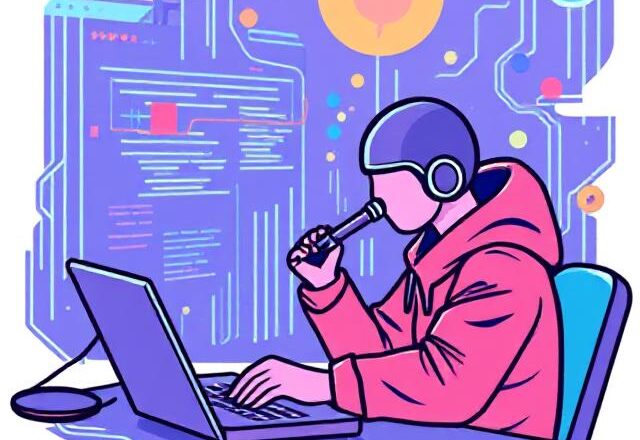Introduction
Imagine building software by telling your computer what you want it to do—without writing a single line of code. Not in pseudocode or drag-and-drop blocks, but in plain English. Welcome to “vibe coding”, the latest frontier in AI-powered development.
Emerging in early 2025, the term was coined by tech luminary Andrej Karpathy and refers to a programming paradigm where developers rely entirely on large language models (LLMs) for code generation. Instead of crafting syntax, you guide an AI with prompts, test, and iterate.
This article dives into how vibe coding works, what makes it different, who’s using it, and the road ahead. Let’s explore this intriguing shift in how software may be built going forward.
1. What Is “Vibe Coding”?
Vibe coding takes AI-assisted development to a new level:
-
You supply natural language instructions to an LLM.
-
The AI writes full blocks of code—or entire apps.
-
You don’t manually review each line. It’s about “vibes” and vision.
-
Feedback loops with the AI refine functionality through testing and iterative prompts.
As Karpathy put it: “The hottest programming language is English.” You guide, the AI executes.
2. How It Differs From Traditional AI Coding Assistants
Traditional AI Assistants:
-
Suggest code snippets.
-
Require developers to review, debug, and integrate.
-
Still heavily manual and review-intensive.
Vibe Coding:
-
Bypasses manual writing completely.
-
Let’s developers focus on ideas, logic, and iteration.
-
Can accelerate prototyping by orders of magnitude.
3. Real-World Examples
MenuGen by Karpathy
An internal prototype built entirely via prompts. The AI handled full code generation, while Karpathy validated through execution and conversational refinement.
Emerging Communities
Early adopters—from solo hobbyists to creative agencies—are using vibe coding to rapidly generate dashboards, websites, and small tools.
Benefits include accessibility, especially for non-coders, and speed. But beware: oversight and security must keep pace.
4. Benefits — Fast, Inclusive, and Creative
-
Rapid Prototyping: From concept to working demo in minutes.
-
Accessibility: Opens possibility to those without formal coding expertise.
-
Creativity: Encourages experimentation and unconventional solutions.
-
Iterative Flow: Natural language, test, feedback—repeat.
5. Risks and Criticisms
-
Maintainability: Without understanding the code, fixing bugs becomes harder.
-
Security: Unknown code paths may introduce vulnerabilities.
-
Accountability: Who’s liable if something breaks—AI or human?
-
Bias & Quality: Poor data inputs can produce flawed logic.
Many experts warn that while vibe coding is powerful, it must be used with governance, clarity, and tooling to ensure quality and security.
6. The Future Outlook
By 2030, we may see:
-
Developer tools integrating vibe coding, offering safety wrappers and testing frameworks.
-
Educational shift: Coding education moves from syntax to prompt engineering and logic design.
-
Enterprise adoption for low-code internal tools.
-
Hybrid models where vibe coding is complemented by human review for critical systems.
Conclusion
Vibe coding is not just another AI trend—it represents a paradigm shift in software creation. It embodies a future where ideas come to life through conversation, with AI as a creative collaborator.
While not ready for mission-critical systems yet, for prototype-driven development, creative exploration, or entry-level projects, vibe coding could redefine what it means to “write code.”
The future may not just be coders—it might be “vibewranglers.”
